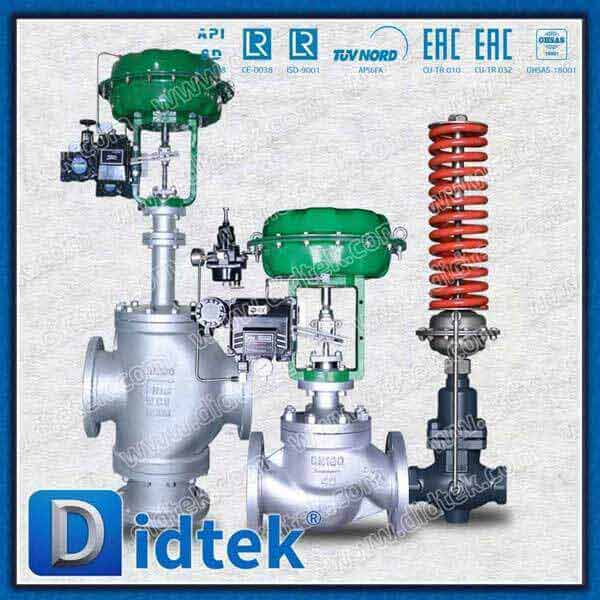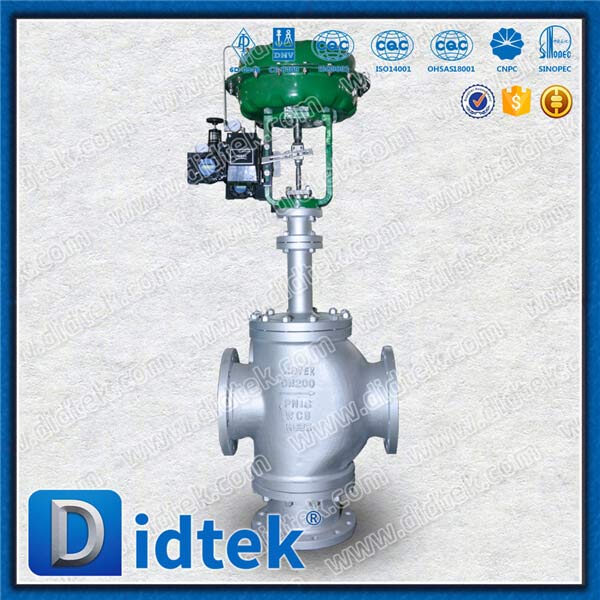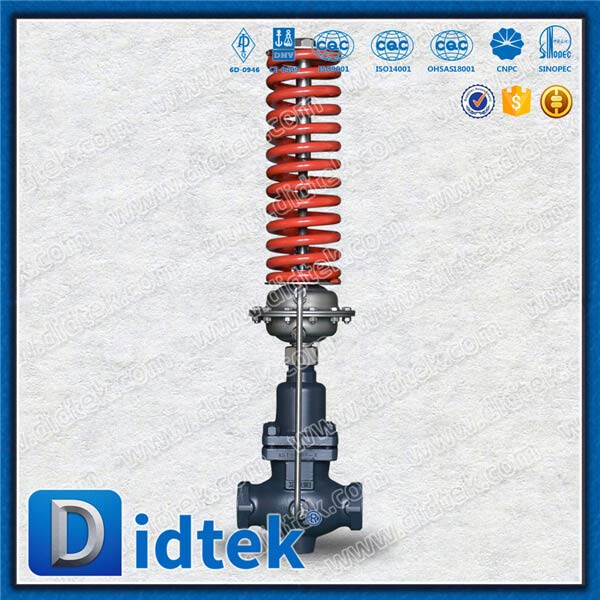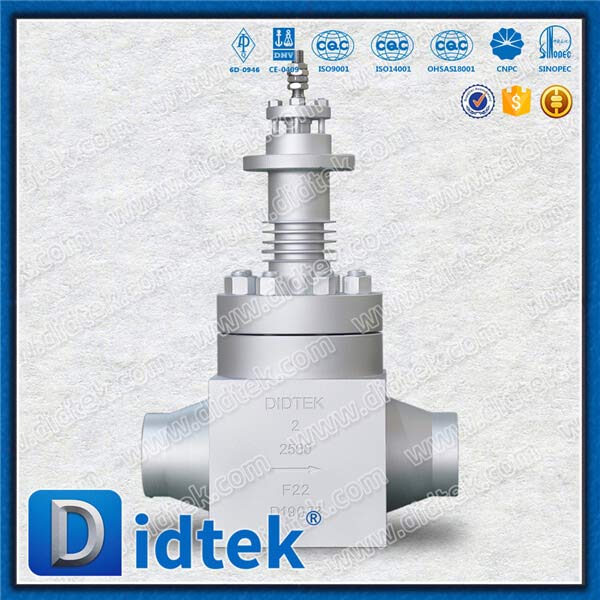Didtek Control Valve is a critical part of the control loop. The control valve manipulates a flowing fluid, such as gas, steam, water, or chemical compounds to compensate for the load disturbance and keeps the regulated process variable as close as possible to the desired set point.

Didtek Control Valve manufacturer according to ASME B16.34,IEC60534.Application: Petroleum Chemical Industry,Steel,Metallurgy.

3-Way Globe Control Valve Applicable Standards:Control valve, Standard: ASME B16.34 IEC60534 Face to Face: ISA-75.03-1992

Pressure regulating valve type self regulated, Control valve, Standard: ASME B16.34 IEC60534, Face to Face: ISA-75.03-1992

Bare stem Straight Through Pattern Control Valve Standard: ASME B16.34 IEC60534, Face to Face: ISA-75.03-1992
A control valve is a power-operated used to regulate or manipulate the flow of fluids, such as gas, oil, water, and steam.
It is a critical part of a control loop and is an example of a final control element. The Control Valve is by far the most common final control element used in industry today.
A control valve can be operated electrically, pneumatically, or hydraulically.
A control valve receives a signal from a controller such as a PLC in order for it to move resulting in a change in flow.
Because the PLC signal is electrical, the control valve may require a device to convert that electrical signal so that it can operate.
Control Valves are used to regulate the flow of steam, water or other fluids to maintain a process such as heating water with steam or cooling down a process using chilled water. They are only one component of a control loop and they rely on other components for proper function (i.e. controller, sensor, transducer, etc.). When properly installed and set-up with appropriate control loop components, these valves provide extremely accurate control.
